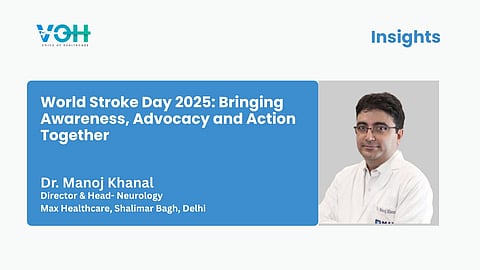

Introduction and Global Burden
On World Stroke Day, 29th October 2025, we unite to raise awareness, strengthen advocacy, and drive action for one of the leading causes of death and disability worldwide. Stroke can strike at any age, and its burden is rising sharply among younger adults.
Globally, 10–15% of all strokes occur in people under 50 years, with incidence in those aged 20–44 years increasing from 17 to 28 per 100,000 between 1993 and 2020. Nearly 1–2 million young adults are affected annually. In this group, 50% have hypertension, 14% diabetes, and 22% obesity—risk factors once seen mainly in older populations. These alarming trends underline the urgent need for awareness, prevention, and timely treatment.
Recognising Stroke: Act B.E.F.A.S.T.
Awareness of stroke symptoms saves lives.
Remember B.E.F.A.S.T.:
· B – Balance: sudden loss of coordination
· E – Eyes: sudden blurred or double vision
· F – Face: one-sided drooping
· A – Arm: weakness or numbness
· S – Speech: slurred or incoherent speech
· T – Time: act fast — call emergency services immediately
Other signs include sudden severe headache, confusion, or trouble walking. Every minute counts — time lost is brain lost. Arriving by ambulance ensures faster diagnosis and treatment than self-transport.
Types, Causes, and Risk Factors
Two major stroke types occur across all ages:
· Ischemic Stroke – blockage of blood or oxygen flow to the brain, causing tissue damage; accounts for 70–80% of strokes in adults under 50.
· Hemorrhagic Stroke – bleeding within or around the brain; represents 20–30% in this age group.
Overall, 85% of strokes are ischemic and 15% hemorrhagic globally.
In young adults, strokes are increasingly linked to lifestyle and metabolic risks—hypertension, diabetes, obesity, dyslipidaemia, smoking, poor diet, and inactivity. Other causes include:
· Cervical artery dissection (10–25% of young strokes) presenting with neck pain or headache before onset.
· Patent foramen ovale (PFO), a small heart defect that allows clots to reach the brain.
· Blood clotting disorders, genetic diseases (like Fabry or Moya Moya), drug use such as cocaine, and vitamin B12 deficiency.
Despite detailed evaluation, 20–30% of young strokes remain cryptogenic (of unknown cause).
Diagnosis, Treatment and Prevention
Modern imaging techniques such as MRI and CT angiography help detect stroke early and identify vessel blockages. Unfortunately, young adults often reach emergency care later than older individuals, delaying therapy.
Management principles are similar across age groups — rapid intervention, risk factor control, and comprehensive rehabilitation are key. Thrombolysis and mechanical thrombectomy, when performed on time, can significantly improve recovery outcomes.
Prevention remains the cornerstone of reducing stroke burden. Up to 75% of strokes are preventable through:
· Regular monitoring of blood pressure, blood sugar, and cholesterol
· Healthy diet, regular exercise, yoga, and stress management
· Avoiding smoking and excessive alcohol
Community awareness of early warning signs and access to emergency medical care remain essential to improving survival and reducing disability.
Advocacy, Awareness and Community Action
Combating stroke requires both system-level support and community participation.
· Advocate for better care: ensure access to stroke units, rehabilitation, and emergency response systems.
· Support policy measures: promote tobacco control, salt reduction, and programs for hypertension and diabetes screening.
· Engage communities: share knowledge of stroke symptoms, participate in awareness drives, and support stroke survivors through rehabilitation networks.
Public health policies, together with personal responsibility, can dramatically lower stroke incidence and long-term disability in India and globally.
Conclusion
The rising incidence of stroke among younger adults driven by modern lifestyles, rising stress levels, and growing rates of metabolic disorders signals an urgent public health challenge.
An alert society and responsive healthcare system must work hand in hand to promote early recognition, prompt treatment, and preventive action. Stroke is preventable, treatable, and beatable — but only if we act FAST.